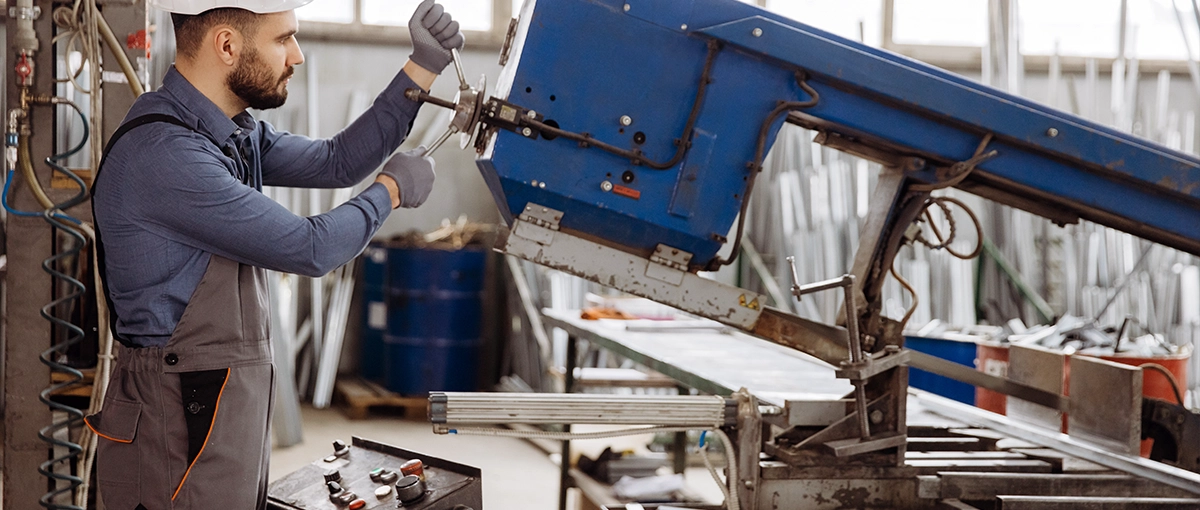10 Quick Fixes for Slow-Cutting Bandsaws

A slow-cutting bandsaw can bring productivity to a crawl, and in industrial settings, that’s unacceptable. Fortunately, most of the common causes for sluggish performance are easy to diagnose and fix. Let’s get into practical tips and adjustments to keep your bandsaw moving at the pace you need.
1. Sharpen or Replace the Blade
A dull blade is the most common culprit when a bandsaw starts dragging through cuts. Over time, even the best-quality band saw blades lose their edge, especially when cutting through hard materials. Regularly inspect the teeth for wear or missing segments, and replace the blade if necessary. If you work with wood, metal, or composites daily, consider investing in a blade sharpening setup to save money over time.
2. Adjust the Blade Tension
Incorrect blade tension can wreak havoc on cutting efficiency. Too loose, and the blade will wobble, producing rough cuts and slowing the process. Too tight, and it increases wear on the blade and the machine. Use the manufacturer’s guidelines as a baseline and make small adjustments until the band saw blade runs smoothly and cuts consistently.
3. Check the Feed Rate
Pushing materials too fast or too slow can result in inefficient cutting. If the feed rate is too aggressive, the blade might struggle to keep up, wearing out faster. Conversely, feeding too slowly wastes time and reduces productivity. Calibrate the feed rate based on the material you’re working with and the specifications of your bandsaw.
4. Clean the Blade and Guides
Debris buildup on the blade or in the guide system can slow everything down. Sawdust, resin, or metal shavings create extra drag, making the motor work harder and the blade cut slower. Regular cleaning with a brush, compressed air, or a gentle solvent keeps everything running smoothly.
5. Lubricate the Blade
Friction is another speed killer. If your blade isn’t adequately lubricated, it can heat up, dull faster, and cut less effectively. Use a suitable lubricant for the material at hand—coolants for metals, wax for wood, or purpose-made blade sprays for general use. Applying lubrication during extended cutting sessions can also extend the blade's lifespan.
6. Inspect the Blade Guides and Bearings
Blade guides and bearings ensure the blade tracks properly, but if they’re worn or misaligned, performance will suffer. Examine these components for wear, and replace them if needed. Adjustments to align the guides with the blade should be done with precision—misalignment can lead to uneven cuts and premature wear.
7. Reduce Vibration
Excessive vibration is a clear sign of underlying issues. It can stem from an unbalanced blade, loose mounting bolts, or worn drive belts. To address vibration:
- Tighten any loose fasteners on the machine.
- Inspect drive belts for wear or cracks, and replace them as needed.
- Check for an unbalanced blade and replace it if wobble persists.
Eliminating vibration doesn’t just improve speed—it also enhances accuracy and reduces noise.
8. Upgrade the Blade Material
Not all blades are created equal. If you’re working with tough materials like stainless steel or dense hardwoods, ensure your blade is designed for the task. Bi-metal blades or carbide-tipped options often last longer and cut faster than standard blades. While they come at a higher cost, their efficiency and durability can more than make up for it in the long run.
9. Fine-Tune the Speed Settings
Bandsaws typically have adjustable speed settings to accommodate different materials. Cutting metal requires slower speeds than cutting wood, for instance. Using the wrong speed can cause slow cutting or even damage the blade. Refer to the material recommendations for your saw, and don’t hesitate to adjust speeds mid-task if you notice performance dropping.
10. Inspect and Maintain the Drive System
The drive system is the heart of your bandsaw’s operation. If belts are loose or worn, or if the pulleys are misaligned, cutting efficiency will drop. Regular maintenance of the drive system includes:
- Tightening or replacing belts.
- Ensuring pulleys are clean and aligned.
- Checking the motor for consistent output.
Proper drive system maintenance not only improves cutting speed but also extends the life of the entire machine.
Small Tweaks, Big Results
With just a little attention to these areas, you can turn a sluggish bandsaw into a high-performing workhorse. These fixes require minimal downtime and can often be implemented immediately. Keep your tools sharp, your machine clean, and your operations running like a well-oiled machine—or in this case, a well-lubricated bandsaw.


